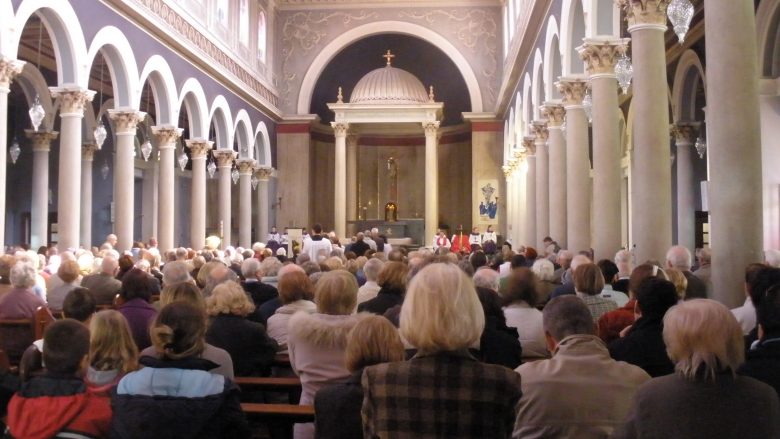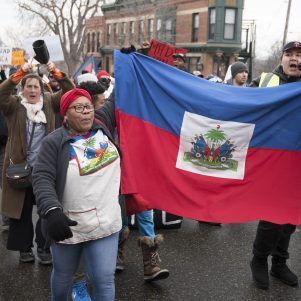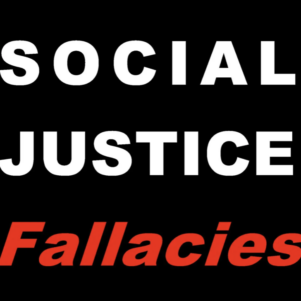Catholic Church grapples with diversity in pews
By Kara Bettis | May 23, 2016, 5:00 EDT
 (Photo courtesy of Wikipedia.org)
(Photo courtesy of Wikipedia.org) BOSTON – As with many U.S. religious institutions, the traditional European-American Catholic demographic is graying in New England. An emerging face increasingly represents the American Catholic nationwide – and is slowly becoming the visage of the typical Massachusetts Catholic, too: the millennial Latino.
But while Hispanics make up 40 percent of the approximately 78 million Catholics in the U.S., only 25 percent of Catholic parishes actively serve Latinos, according to a 2014 report from Boston College.
“In New England we continue – because of the size of the Hispanic population – the Hispanic is still treated as a minority. It’s a specialized ministry,” said Hosffman Ospino, a Boston College theology professor who teaches courses about the subject. “There’s still a long way in understanding who Hispanics are and their contributions to the church.”
Out of the 700,000 Hispanics living in Massachusetts, Ospino estimates about 400,000 reside in the area covered by the Roman Catholic Archdiocese of Boston. And based on national trends, roughly 60 percent, or 250,000 would identify as Catholics, he said.
The median age of Latinos living in the U.S. is 28, Ospino said. By comparison,the median age of white non-Hispanic American Catholics is 45. Hispanics have accounted for 71 percent of the growth of the U.S. Catholic population since 1960, according to the report.
Ospino believes that the relatively few Catholic churches specifically serving Latinos stems from the differing demographics of that group from others. Fewer Hispanics are as highly educated as Euro-American Catholics, and up to two-thirds of Latinos in the church struggle with poverty, while most non-Hispanic whites fall into middle-income or better brackets. That can make it hard for a Latino-focused church to be self-sustaining.
“When two-thirds of our group is struggling with poverty, it’s difficult to expect them to support parishes,” he said.
Lawrence’s St. Patrick parish provides an example, albeit an extreme one, as the poverty rate in the city is more than double the statewide average. U.S. Census data show that more than a third of Lawrence families with children live below the poverty line compared with about 13 percent of all such households in the state.
The Rev. Paul O’Brien, a St. Patrick priest, faces challenges in the community ranging from hunger to violence to education every day. With support from his congregation, he has dealt with each.
“Our parish leaders don’t always think in terms of programs,” O’Brien said. “We think of reaching out.”
At St. Patrick, a parish that O’Brien estimates to be about 60 percent Latino, 35 percent non- Hispanic white and 10 percent drawn from other ethnic groups, there are a lot of young people. One way the parish serves them is by sponsoring the Lawrence Catholic Academy, which has more than 500 students. But it goes beyond that too.
“There are several thousand teenagers active in one way or another in St. Patrick’s,” O’Brien said.
Religious or not, they come to the church gym to play basketball. They come to Cor Unum, a food shelter opened in 2006 that serves two meals each and every day of the year. And O’Brien is, for many, a father figure.
O’Brien is humble, though, adding that although they have effectively solved the hunger problem in the city, there are an array of other challenges.
“I’ll never tell you that because they’re active, we’re actually solving their problems,” he said about the youth the parish serves, in and outside the church. “But really while we’re doing all these good things, there’s a list of things we wish we were doing and are not that’s even longer.”
Between the slow movement of the church, and the challenges majority-Latino parishes face, Ospino is concerned that changing circumstances will outrun its efforts to evolve.
“The next generation, we are losing them because we’re not reaching out to them,” Ospino said. “We are doing a very bad job retaining Hispanic Catholics. Most youth ministry programs are serving primarily white, Euro-American kids.”
For example, parishes with a mere 100 Hispanic youth among their members should easily have 3,000, he said.
The Boston Archdiocese didn’t respond to repeated requests for comment on Hispanics and the church, but there are signs that it is responding to demographic changes.
Last fall, two Catholic radio stations began broadcasting in Portuguese and Spanish to the Lawrence and Framingham areas. Maria Pilar Latorre, who for years taught catechism to Hispanic parishioners and began the Instituto de Formacion de Laicos (Institute for the Formation of the Laity), a church leadership program for Spanish-speakers, before she retired last year. It has graduated more than 300 participants.
Like any community, the challenges and needs of the Latino community are unique. Hispanic parents might need help navigating college life for a first-generation college student. Latino youth vulnerable to gang violence could use church intervention programs. Ospino pointed to the gang activity in areas like Roxbury, Dorchester, Everett and Jamaica Plain.
“The Catholic church should be at least one of the leaders in developing the conversation in this matter,” Ospino said. “I don’t see that happening.”
Family life is also essential in the Latino community, with many couples moving in together or marrying at a much younger age than is typical among other American ethnic groups. But Latinos also have a high rate of domestic violence, divorce and separation.
“Because most are Catholic, the Catholic Church should be involved,” Ospino said. “Right now.”
Often, he said, others assume that the government will help, or that most families are self-sufficient, but that’s not always true. In the meantime, Ospino said, the Hispanic community is moving closer to becoming a subclass.
The church can also help by training bilingual priests and educating leaders.
“Yes, it is politics, but it’s the politics of the gospel,” he said. “It’s helping people’s lives.”
Contact Kara Bettis at [email protected] or on Twitter @karabettis.
NBPDiversity










